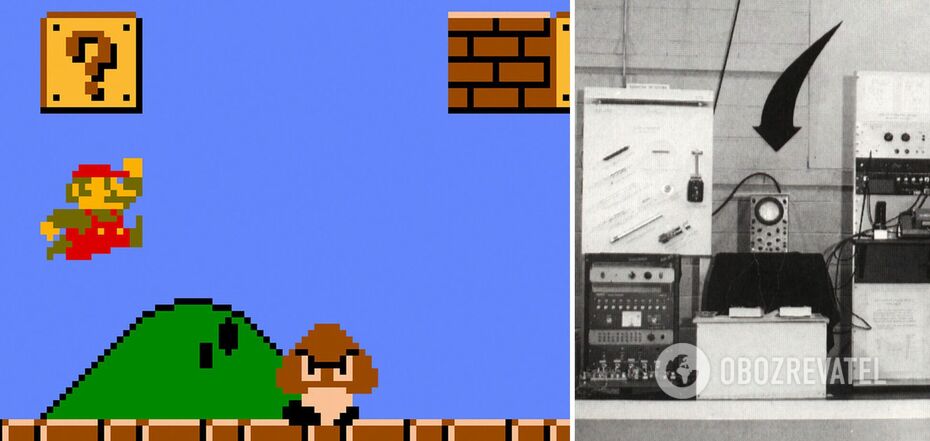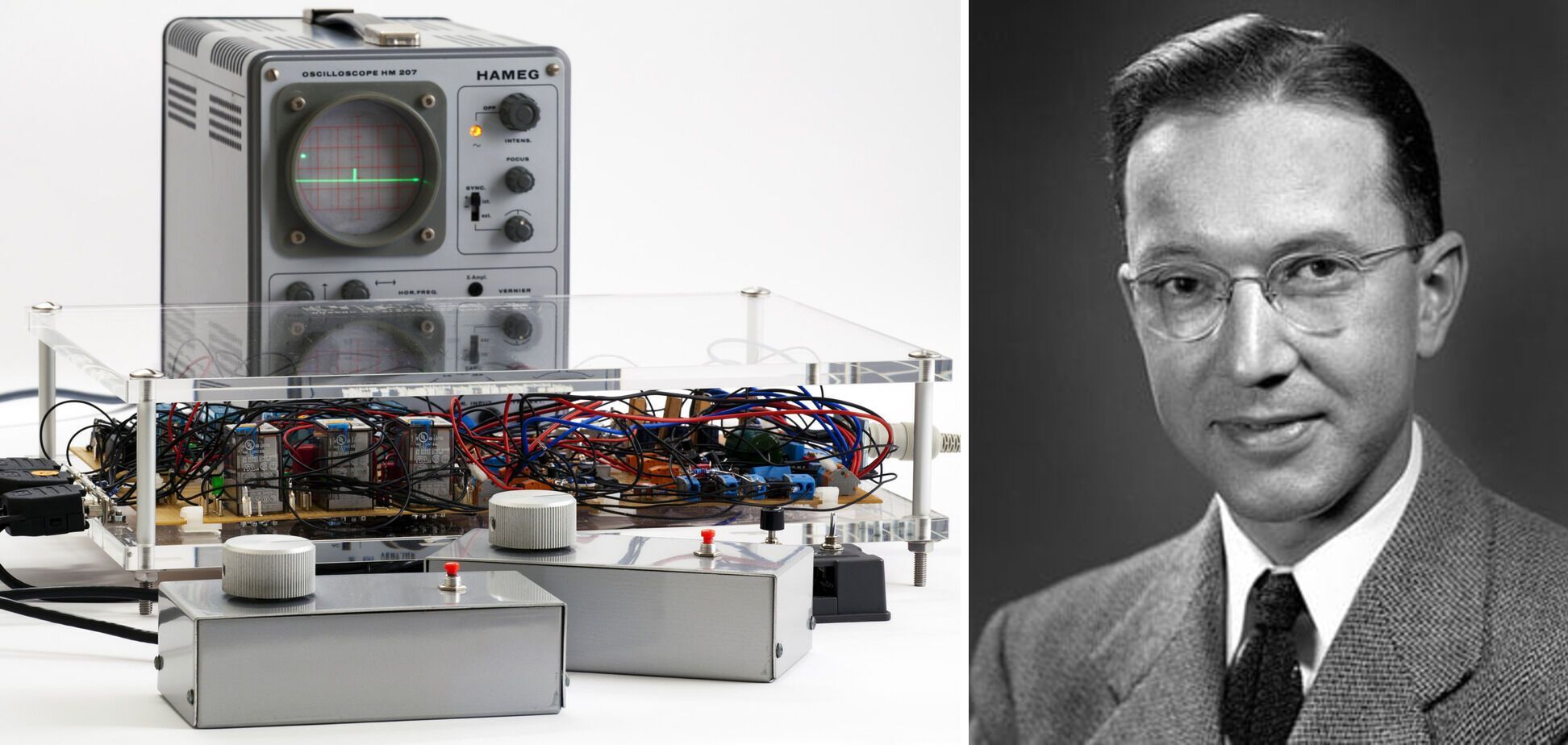Life
What was the first video game: the story of a physicist who realized that science was boring
Long before the mustachioed plumber went on a long journey to rescue his princess (hello, Super Mario) and the round yellow glutton got lost in a haunted maze (hello, Pac-Man), the first video game in human history was created with the goal of not only bringing science to people's attention, but also having fun. It was a two-player tennis game that captivated many people back in 1958.
OBOZREVATEL tells the story of the first video game, as well as its developer (to see the video, scroll to the end of the news).
Tennis for two
The Brookhaven National Laboratory in the 1950s held annual visitor days, when the achievements of the best minds were shown to a curious public. Apparently, it was getting harder and harder to surprise people year after year (especially since the market was already booming with the first televisions ), so nuclear physicist William Higinbotham came up with a toy that should bring back people bored with clever (of course), but so "lean" science.
"This place could be enlivened by a game that people could play, a message that our scientific efforts matter to society," wrote the physicist who headed the Brookhaven Laboratory's Instrumentation Department.
Of course, he was limited by the technological advances of his time, so he couldn't surprise people with striking landscapes of distant planets or fast-paced plot developments, but he probably guessed that nothing was more fun than a friendly competition, so tennis was the perfect option.
"Tennis for Two" was first introduced on October 18, 1958, at one of the annual visitors' days. Higinbotham's development featured two separate controllers connected to an analog computer that were used by the players, and a 12.7 cm diameter oscilloscope screen was used instead of a monitor.
Visitors playing Tennis for Two saw a two-dimensional image of the tennis court on an oscilloscope screen that used an electron-beam tube. The ball, a brightly lit moving dot, left trails as it bounced on different sides of the net.
Players could serve the ball as well as take twisting strokes using the controller buttons and rotary knobs that changed the angle of the virtual tennis racket's swing.
The game was so much enjoyed by the first visitors that later on there were queues of people who wanted to see and try the wonder of technology for themselves.
A year later, Higinbotham updated his game. In addition to using oscilloscopes with screens from 25 to 44 cm in diameter, the game had new physics. Players could now play tennis on the Moon - with low gravity - and tennis on Jupiter - with high gravity. Though visually, of course, it was the same screen with the light elements of the court and ball.
Of course, when Tennis for Two appeared in 1958, no one knew that decades later there would be video games that would become something on the verge of movies and books in the early 21st century with well-written plots and deep characters.
So it wasn't until the early 1980s, when several industry magazines called Tennis for Two the first video game in history, that people began to talk about the development of Higginbotem as something historical.
How Higginbotham managed to create his game
The "brain" of Tennis for Two was a small analog computer, and he borrowed the very idea for the game from a computer manual. It described how to generate different curves on an oscilloscope's cathode ray tube using resistors, capacitors, and relays. Among the examples were trajectories of a ball, a rocket, and a bouncing ball. It was the ball example that sparked the idea of "Tennis for Two" in the physicist's brain.
The computer had 10 operational amplifiers, four of which were responsible for the movement of the ball on the screen, while the other six limited the movement of the ball, understanding when it hit the ground or hit the net, and switching control to the player whose side of the court the ball was on.
Peter Takacs of the Brookhaven Laboratory's Instrumentation Department, which was involved in relaunching the development of the Higinbotem in the 2000s, noted that the development of the nuclear physicist was cutting-edge for its time.
"The real innovation in this game is the use of 'newfangled' germanium transistors, which were just becoming commercially available in the late 1950s. Higinbotham used the transistors to build a fast circuit that would take three computer outputs and alternately display them on an oscilloscope screen at a "lightning fast" speed of 36 Hertz. At that speed, the eye sees the ball, the net and the court as one image, not as three separate pictures," the scientist explained.
Overall, when Higinbotham designed Tennis for Two, he used much of what he had done before. It took about two hours to develop the design, and only a few days to fill it with components that were on hand. About three more weeks were spent putting the game together and getting it up and running.
The lab still has the official blueprints, dating back to 1958.
Was Tennis for Two really the first video game?
Technically, there were three other games that used electronic components before Higinbotem was developed. But none of them could be called a video game.
In 1948, Thomas Goldsmith, Jr. and Esl Mann patented the "Electron-Ray Tube Entertainment Device. However, this device required players to superimpose images or illustrations of targets in front of the screen. Otherwise, there was no point in playing the game. Whereas Higinbotem tennis displayed an image of the game entirely on the screen.
In 1951, Ferranti International developed the Nimrod computer, which was used to play the century-old mathematical logic-strategy game Nim. But the game existed on the computer only to demonstrate its computing power. So the main element of the game - entertainment - was missing.
In addition, Nimrod did not use a cathode-ray tube display to simulate the movement of elements on the screen. Instead he used a set of light bulbs that turned on and off when the player made his move.
In 1952, AS Douglas of Cambridge University also created his own game - an electronic version of tic-tac-toe, which he called OXO. But the game was single-player and aimed to explore the interaction between man and computer. Like Nimrod, OXO was not designed for entertainment.
Previously OBOZREVATEL told how the first computer in history looked like and why it was not recognized for a decade.
Subscribe to channels OBOZREVATEL in Telegram and Viber to keep up with the latest developments.





























